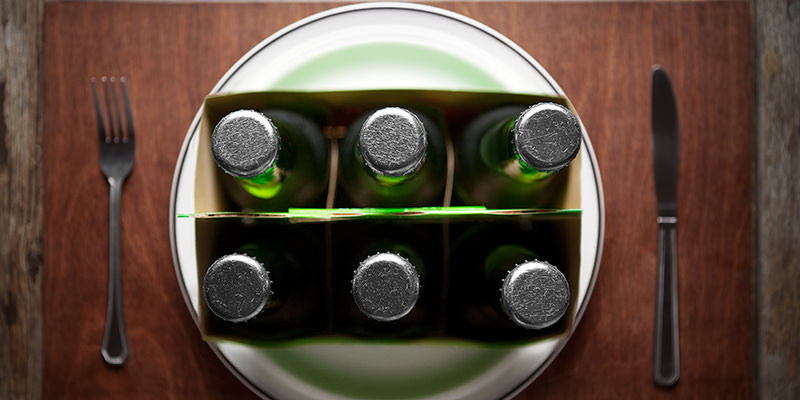Beloved Massachusetts brewery Pretty Things Beer and Ale Project folded up shop last fall, and who knows why? Their beer was always good and often great, their branding was strong, they got at least their fair share of fawning local media coverage. A lot of dot-connectors are convinced they couldn’t withstand the fallout that came their way after blowing the whistle on Massachusetts’s persistent pay-to-play problem, in which distributors bribe bars for dedicated tap lines.
This makes sense on the face of it, but I think it’s just as likely that they blew the whistle because they knew they were winding down operations and had little left to lose. They were contract brewers who expressed no interest in ever owning their own brewery, and in seven years they never graduated from the bomber-only format to 12-ounce cans or bottles. Oversized bottles are usually a bad deal for consumers, as explained here, and they’re rarely a viable long-term strategy for breweries, either.
There are exceptions, of course. Maine Beer Company has been hugely successful despite packaging their beers exclusively in 16.9-ounce bottles that are usually priced between $6 and $9 at retail (which would work out to around $8 to $12 per 22-ounce bomber). And though Mikkeller does produce some conventionally sized cans these days, they still do the bulk of their business in big, expensive bottles. But if you can’t get a cult going, you’re better off sticking to traditional packaging formats, because for the vast majority of brewers, even at the very highest end of the quality spectrum, beer remains a volume game. One of the biggest reasons macro lagers continue to dominate the sales charts is because they sell 30 cans at a time.
“No shit,” says every brewer reading this, “but you can’t just make people buy your beer in bulk.” True, but you can make the proposition more attractive by putting your beer in 6-packs of single-serving bottles or cans. Craft beer drinkers are notoriously fickle; many would rather drink two ounces each of 36 different beers than hunker down with a six-pack, and I respect that approach. But in 2016 I’ve resolved to slow down on the sampling and commit more time to truly understanding and appreciating a narrower range of beers. It’s the best way to unclog my crowded beer-brain—how many times in one day should a fellow find himself scribbling “notes of pine and grapefruit” and “hmm, I’m not certain I’ve ever eaten a papaya, to be honest, but I’m pretty sure that’s what I’m calling this flavor these days”?—while also supporting the beers I want to see survive whatever market shakeout may be coming down the line.
Here are 10 beers of various styles that I’ve recently found to be worthy of your entire beer-drinking evening.
SanTan MoonJuice
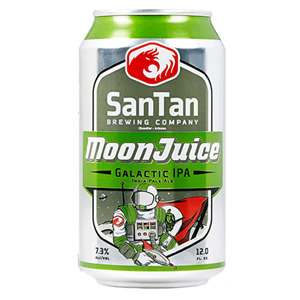 MoonJuice is a fresh and fruity 7.3-percent alcohol-by-volume “galactic IPA” (meaning, near as I can figure, that there’s a space-warrior dude on the label) from Chandler, Arizona. It’s hopped with Galaxy and Nelson Sauvin from Australia and New Zealand, respectively, for a tropical, citrusy flavor heavy on grapefruit and passion fruit.
MoonJuice is a fresh and fruity 7.3-percent alcohol-by-volume “galactic IPA” (meaning, near as I can figure, that there’s a space-warrior dude on the label) from Chandler, Arizona. It’s hopped with Galaxy and Nelson Sauvin from Australia and New Zealand, respectively, for a tropical, citrusy flavor heavy on grapefruit and passion fruit.
Revolution A Little Crazy
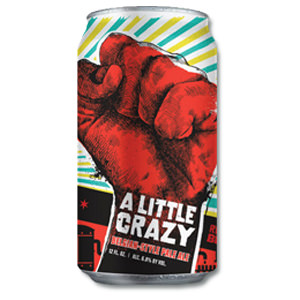 I’m a sucker for a Belgo-American hybrid pale ale, and this 6.7-percent ABV number from Chicago is one of the best, particularly when price and accessibility are accounted for. A Citra and Cascade dry-hopping brings the citrus to the fore, with spicy Belgian yeast esters, hay, and lightly toasted caramel hanging back to provide complexity and balance.
I’m a sucker for a Belgo-American hybrid pale ale, and this 6.7-percent ABV number from Chicago is one of the best, particularly when price and accessibility are accounted for. A Citra and Cascade dry-hopping brings the citrus to the fore, with spicy Belgian yeast esters, hay, and lightly toasted caramel hanging back to provide complexity and balance.
Bronx Rye Pale Ale
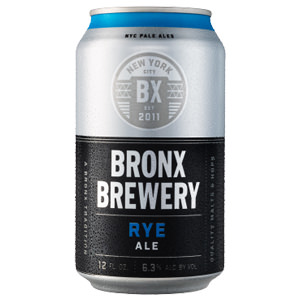 Rye pale ales feature a spicy component similar to that found in some Belgian pales, except with the assertive black pepper coming from the grain rather than the yeast. Chinook and Crystal hops provide a floral, piney, Pacific Northwest-inspired counterpoint to the malt in this 6.3-percent ABV easy-drinker from New York.
Rye pale ales feature a spicy component similar to that found in some Belgian pales, except with the assertive black pepper coming from the grain rather than the yeast. Chinook and Crystal hops provide a floral, piney, Pacific Northwest-inspired counterpoint to the malt in this 6.3-percent ABV easy-drinker from New York.
Laurelwood Workhorse IPA
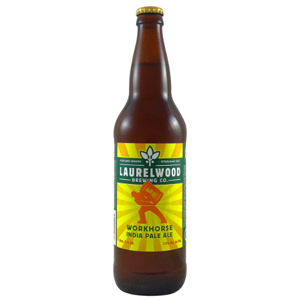 This 7.5-percent ABV gem from Portland, Oregon, strikes an ideal balance between the classically bitter West Coast IPAs that came to prominence in the first decade of the 21st century and the sweeter, fruitier models that have followed. The orange, lemon, peach, and pineapple flavors are balanced by assertive pine resin and a bit of caramel maltiness.
This 7.5-percent ABV gem from Portland, Oregon, strikes an ideal balance between the classically bitter West Coast IPAs that came to prominence in the first decade of the 21st century and the sweeter, fruitier models that have followed. The orange, lemon, peach, and pineapple flavors are balanced by assertive pine resin and a bit of caramel maltiness.
Great Divide Nomad
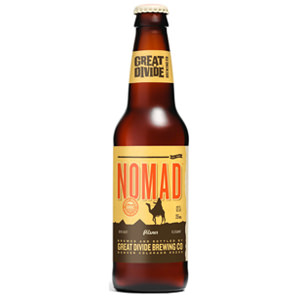 Plenty of Great Divide beer makes its way from Denver to Boston, perhaps even a little too much, because the stuff on the shelves isn’t always fresh. This is why it took me a few years to appreciate just how fantastic their 5.4-percent ABV Nomad can be in its prime. Biscuity malt underlines the crisp, floral, peppery kick from the Saaz hops in this Bohemian-style pilsner.
Plenty of Great Divide beer makes its way from Denver to Boston, perhaps even a little too much, because the stuff on the shelves isn’t always fresh. This is why it took me a few years to appreciate just how fantastic their 5.4-percent ABV Nomad can be in its prime. Biscuity malt underlines the crisp, floral, peppery kick from the Saaz hops in this Bohemian-style pilsner.
Half Acre Daisy Cutter
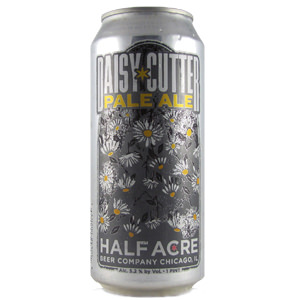 We made a packaging exception for this Chicago export: Half Acre pushes Daisy Cutter in 4-packs of 16-ounce cans, which deprives the consumer of 8 ounces of beer relative to the conventional 6-by-12 configuration, but this 5.2-percent ABV American pale ale is worth the compromise. It’s all grapefruit up front, with earthy pine joining later on. Daisy Cutter should come in quart cans.
We made a packaging exception for this Chicago export: Half Acre pushes Daisy Cutter in 4-packs of 16-ounce cans, which deprives the consumer of 8 ounces of beer relative to the conventional 6-by-12 configuration, but this 5.2-percent ABV American pale ale is worth the compromise. It’s all grapefruit up front, with earthy pine joining later on. Daisy Cutter should come in quart cans.
Sierra Nevada Stout
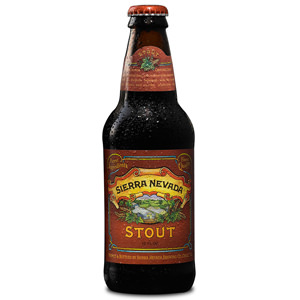 A few weeks ago I had the distinct pleasure of taking part in VinePair’s stout and porter tasting panel. In a true testament to my influence within the company, just about the only American stout not included was my favorite, Sierra Nevada’s 36-year-old, 5.8-percent ABV masterpiece that augments the standard roasted malt profile with prominent notes of citrus and pine.
A few weeks ago I had the distinct pleasure of taking part in VinePair’s stout and porter tasting panel. In a true testament to my influence within the company, just about the only American stout not included was my favorite, Sierra Nevada’s 36-year-old, 5.8-percent ABV masterpiece that augments the standard roasted malt profile with prominent notes of citrus and pine.
Lagunitas Little Sumpin’ Sumpin’
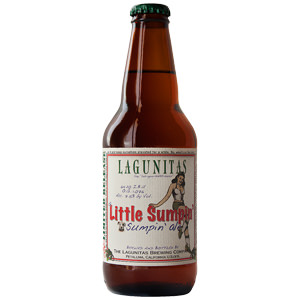 This 7.5-percent hoppy wheat ale is the ideal six-pack to bring back to your hotel room late at night. Why? Because my notes say so. Maybe because the dense, dank, resin, light lemon, and sweet grain are potent enough to cut through the fog after a long day, and the four left-over in the ice bucket the next morning provide a stirring reintroduction to sunlight?
This 7.5-percent hoppy wheat ale is the ideal six-pack to bring back to your hotel room late at night. Why? Because my notes say so. Maybe because the dense, dank, resin, light lemon, and sweet grain are potent enough to cut through the fog after a long day, and the four left-over in the ice bucket the next morning provide a stirring reintroduction to sunlight?
Jack’s Abby House Lager
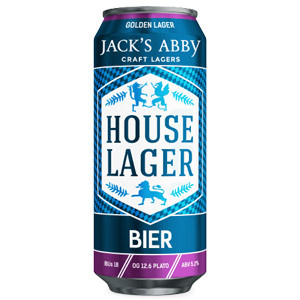 This 5.2-percent ABV Helles lager will likely compete with Notch Session Pils for the coveted title of “Beer I Drink Most Often In The Park Across The Street This Summer For The Sheer Civil Disobedience Of It All Because, A Man’s Gotta Feel Alive Sometimes, You Know?” Off-dry, smooth, and impeccably chuggable, House Lager gets many bonus points for having the decency to come in 6-packs of 16-ounce cans, and at a price point that could render PBR tallboys locally obsolete.
This 5.2-percent ABV Helles lager will likely compete with Notch Session Pils for the coveted title of “Beer I Drink Most Often In The Park Across The Street This Summer For The Sheer Civil Disobedience Of It All Because, A Man’s Gotta Feel Alive Sometimes, You Know?” Off-dry, smooth, and impeccably chuggable, House Lager gets many bonus points for having the decency to come in 6-packs of 16-ounce cans, and at a price point that could render PBR tallboys locally obsolete.
Anderson Valley Kimmie, the Yink, and the Holy Gose
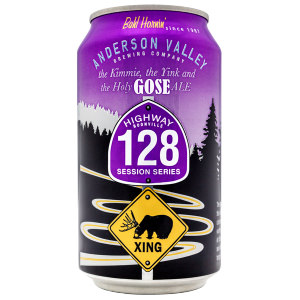 Christ, whoever knows what Anderson Valley’s weirdo beer names mean? I guess we just have to trust that they seem like good enough folk that it’s not something offensive? Please don’t let yink be a slur. Anyhow, time to celebrate a high-quality, widely available, reasonably priced gose! This 4.2-percent ABV version has tropical aromas along with the salt, wheat, and coriander that define the style, and lactobacillus in the brew kettle adds refreshing tanginess.
Christ, whoever knows what Anderson Valley’s weirdo beer names mean? I guess we just have to trust that they seem like good enough folk that it’s not something offensive? Please don’t let yink be a slur. Anyhow, time to celebrate a high-quality, widely available, reasonably priced gose! This 4.2-percent ABV version has tropical aromas along with the salt, wheat, and coriander that define the style, and lactobacillus in the brew kettle adds refreshing tanginess.

